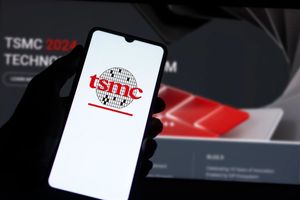
Beijing, China – October 9, 2025 – In a move set to profoundly reshape global supply chains and ignite further geopolitical tensions, China has dramatically expanded its export controls on rare earths and related processing technologies. The announcement, made today by the Ministry of Commerce (MOFCOM), tightens Beijing's grip on materials critical to advanced technology, defense, and manufacturing, sending immediate ripples of uncertainty and price volatility across international markets. This escalation is widely perceived as a strategic countermeasure to Western restrictions on high-tech exports to China, particularly in the semiconductor sector.
The new regulations are not merely an extension of previous measures but represent a comprehensive tightening of control over the entire rare earth value chain, from mining and smelting to advanced magnet manufacturing and recycling technologies. Industries worldwide, already grappling with supply chain vulnerabilities, now face increased compliance burdens, potential production delays, and a pressing imperative to diversify away from Chinese rare earth dependency. The tech industry, in particular, stands at a critical juncture as it confronts the implications for everything from advanced semiconductors to electric vehicles and defense systems.
Beijing Tightens the Screws: A Deep Dive into the New Rare Earth Export Regime
China's latest directive, announced on Thursday, October 9, 2025, significantly broadens the scope of its rare earth export controls, moving beyond raw materials to encompass the sophisticated technologies and components that underpin its dominant position in the global rare earth industry. This decisive action comes into immediate effect for many of the new restrictions, with further measures slated for November and December of this year.
The core of the expanded controls lies in the requirement for export licenses for technologies related to rare earth mining, smelting, separation, metal smelting, magnetic material manufacturing, and the recycling and utilization of rare earths from secondary sources. This effectively prevents Chinese companies from sharing or selling the crucial manufacturing know-how that has made China the world leader in rare earth magnets. Furthermore, the restrictions extend to more types of rare earth magnets themselves, as well as components and assemblies containing these restricted magnets, and even equipment used for rare earth recycling.
A critical aspect of the new regime is the explicit targeting of end-users. Overseas defense users will generally be denied export licenses, signaling a clear strategic intent. Applications related to advanced semiconductors—specifically 14-nanometer chips or more advanced, memory chips with 256 layers or more, and associated production equipment and R&D—will only be approved on a case-by-case basis. This directly impacts major global chipmakers like Samsung Electronics (KRX: 005930), Taiwan Semiconductor Manufacturing Company (TSMC) (NYSE: TSM), and SK Hynix (KRX: 000660). Beijing's Ministry of Commerce stated these measures are essential for "better safeguarding national security and interests" and preventing the transfer of these critical items for military or sensitive applications by "overseas bodies and individuals."
The timeline of these escalating controls reveals a calculated strategy. Initial sweeping export controls on certain rare earth elements were first implemented in April 2025, reportedly in response to U.S. tariffs and leading to significant global shortages. Today's expansion on October 9, 2025, represents a dramatic intensification, with most new rules taking immediate effect. Looking ahead, restrictions on five additional rare earth elements (holmium, erbium, thulium, europium, and ytterbium) and related processing equipment are scheduled for November 8, 2025. By December 1, 2025, new rules will require compliance from foreign rare earth producers that utilize Chinese materials or equipment, even extending to a controversial "0.1% rule" where foreign-manufactured products containing more than 0.1% Chinese-origin rare earth materials by value may require MOFCOM approval for export to a third country. This extraterritorial reach highlights the far-reaching implications of China's policy.
Key players and stakeholders in this unfolding saga include China's Ministry of Commerce (MOFCOM) and the broader Chinese government, led by President Xi Jinping, who is leveraging rare earth dominance for strategic geopolitical advantage. On the other side are the United States government and the administration of President Donald Trump, whose tariffs and restrictions on chipmaking equipment have been met with these retaliatory measures. The European Union (EU) and India, major importers of Chinese rare earths, are also significantly impacted. The global defense and advanced semiconductor industries are directly in the crosshairs, while non-Chinese rare earth companies like MP Materials (NYSE: MP) and Lynas Rare Earths Ltd (ASX: LYC) are emerging as crucial alternatives.
Initial market reactions have been immediate and pronounced. The earlier April 2025 controls had already caused massive global shortages, with prices for critical rare earths like dysprosium tripling in Europe within a month. Today's announcement is expected to perpetuate significant price volatility. Stock markets reacted swiftly, with shares in major Chinese rare earth firms, including China Northern Rare Earth Group (SSE: 600111), China Rare Earth Resources and Technology (SHE: 000831), and Shenghe Resources (SSE: 600392), surging by approximately 10%. Non-Chinese rare earth companies also saw a boost, with Critical Metals Corp (NASDAQ: CRML) gaining 17%, Energy Fuels (NYSE: UUUU) adding 11%, and MP Materials (NYSE: MP) and USA Rare Earth each up 6%, signaling accelerated interest in diversifying supply chains. European and Asian manufacturers have already reported production pauses and delays due to the complexities of obtaining export licenses, underscoring the immediate operational disruptions these controls are causing. The increased compliance burden for foreign companies, including extensive administrative work to document the origin and composition of products, adds another layer of complexity to global trade.
Companies on the Front Lines: Winners and Losers in the Rare Earth Squeeze
China's tightened export controls on rare earths and related technologies are poised to create clear winners and losers across various industries, forcing companies to re-evaluate their supply chains, investment strategies, and long-term viability. The immediate impact will be felt most acutely by those heavily reliant on Chinese rare earth materials and processing expertise.
On the losing side are a multitude of global technology and manufacturing giants. Companies like Dell Technologies (NYSE: DELL), HP (NYSE: HPQ), Apple (NASDAQ: AAPL), and IBM (NYSE: IBM), which integrate rare earth magnets and components into their consumer electronics, servers, and other hardware, face significant supply chain disruptions. The restrictions on advanced semiconductor technologies directly threaten leading chipmakers such as Intel (NASDAQ: INTC), Samsung Electronics (KRX: 005930), and Taiwan Semiconductor Manufacturing Company (TSMC) (NYSE: TSM). Their ability to produce cutting-edge 14nm and more advanced chips, or memory chips with 256 layers or more, could be severely hampered by limited access to critical rare earth materials and, crucially, the associated processing equipment and R&D. Furthermore, any company involved in defense applications that utilize rare earths will find it increasingly difficult to source these materials from China. Manufacturers in the automotive sector, particularly those focused on electric vehicles (EVs) that rely on powerful rare earth magnets for motors, also face potential delays and increased costs. The "0.1% rule" could complicate exports for countless companies globally, even those using minimal Chinese rare earth content in their products.
Conversely, the controls present a significant opportunity for companies outside of China that possess rare earth reserves, processing capabilities, or are actively developing alternative technologies. U.S.-based MP Materials (NYSE: MP), which operates the Mountain Pass mine, and Australian producer Lynas Rare Earths Ltd (ASX: LYC) are primary beneficiaries. Their shares have already seen increases as investors flock to non-Chinese sources. These companies, along with emerging players like Critical Metals Corp (NASDAQ: CRML) and Energy Fuels (NYSE: UUUU), are positioned to capture market share as global industries seek to diversify their supply chains. Companies specializing in rare earth recycling technologies or the development of non-rare earth magnet alternatives also stand to gain. For instance, Noveon, through its partnership with Lynas, is working to establish a U.S. rare earth magnet supply chain, which could insulate key industries from Chinese leverage. Furthermore, nations with their own rare earth deposits, such as Vietnam, Brazil, and India, may see increased investment and development in their domestic rare earth sectors, fostering new partnerships and supply routes. The long-term trend will likely favor companies that can demonstrate secure, diversified, and sustainable supply chains, regardless of their direct involvement in rare earth extraction.
The Broader Geopolitical Chessboard: Reshaping Global Industry and Policy
China's escalated rare earth export controls are far more than a trade dispute; they represent a pivotal moment in the ongoing geopolitical competition, signaling a definitive shift towards resource nationalism and a reordering of global supply chains. This event fits squarely into broader industry trends of de-globalization and a fervent push for supply chain resilience, driven by recent crises and escalating trade tensions.
The move by Beijing is a clear demonstration of its strategic leverage, weaponizing its near-monopoly on critical minerals to counter Western technological restrictions. This tit-for-tat dynamic, particularly with the United States regarding advanced semiconductor exports, highlights a dangerous trend where essential industrial inputs become tools in geopolitical chess. The ripple effects will be profound, impacting innovation, R&D investments, and manufacturing costs globally. Companies will be forced to reconsider the fundamental architecture of their production, potentially leading to reshoring or nearshoring initiatives to secure access to critical materials. This could result in higher production costs, which will ultimately be borne by consumers, and a slower pace of innovation in sectors heavily reliant on these materials.
From a regulatory and policy perspective, these controls will undoubtedly accelerate governmental efforts worldwide to bolster domestic rare earth production and processing capabilities. We can anticipate increased subsidies for mining and refining operations outside China, strategic alliances between nations to secure supply, and potentially new trade agreements aimed at creating diversified supply blocs. The European Union and the United States have already been exploring such initiatives, and these new Chinese restrictions will provide fresh impetus. There is also a significant risk of escalating trade disputes, with affected nations potentially retaliating with their own export controls or tariffs on Chinese goods, further fragmenting global trade.
Historically, this situation draws parallels to China's 2010 rare earth export restrictions, which caused a similar panic and price surge, albeit on a smaller scale. That event spurred initial diversification efforts, but global reliance on China remained largely entrenched. A more distant but relevant comparison is the 1973 OPEC oil embargo, which demonstrated how critical resource control could be used as a powerful geopolitical tool, leading to a global energy crisis and a long-term push for energy independence. The current situation with rare earths suggests a similar, albeit more complex, paradigm shift, where industrial inputs, rather than just energy, become instruments of national power. This time, however, the stakes are arguably higher, given the foundational role of rare earths in modern and future technologies.
Navigating the New Terrain: What Comes Next for Markets and Industries
The immediate aftermath of China's expanded rare earth export controls will be characterized by continued market volatility and significant uncertainty. In the short term, industries heavily reliant on these materials, particularly those in defense, advanced semiconductors, and electric vehicles, will scramble to secure existing inventories and explore alternative, albeit often more expensive and less efficient, supply routes. Production delays and increased costs are almost inevitable as companies navigate the complex new licensing requirements and the "0.1% rule."
Looking further ahead, the long-term possibilities point towards a fundamental restructuring of global supply chains. This will necessitate significant strategic pivots and adaptations across industries. Companies will be compelled to accelerate investments in vertical integration, securing their own mining and processing operations or forging robust partnerships with non-Chinese suppliers. Reshoring or nearshoring manufacturing capabilities, particularly for critical components, will become a more attractive, albeit costly, proposition. A major focus will be on R&D into alternative materials and technologies that can reduce or eliminate reliance on rare earths. For example, research into non-rare earth magnets for EV motors or advanced electronics will gain unprecedented urgency.
These challenges also present considerable market opportunities. There will be a surge of investment in new rare earth mining and processing projects outside of China, particularly in regions like North America, Australia, and potentially Africa. Companies specializing in rare earth recycling technologies will see increased demand as industries look to create circular economies for these valuable materials. Furthermore, expect an uptick in mergers and acquisitions within the rare earth sector as companies seek to consolidate resources and expertise. The development of entirely new materials science breakthroughs could also emerge as a long-term game-changer, fundamentally altering the demand landscape for traditional rare earths.
Potential scenarios range from a protracted "resource war" where export controls and counter-measures escalate, leading to further fragmentation of global trade, to the formation of new, resilient supply chain alliances between like-minded nations. Another scenario involves significant technological breakthroughs that could diminish the strategic importance of rare earths over time. However, the most likely outcome in the near to medium term is a dual supply chain system: one largely controlled by China and another, nascent but growing, developed by Western nations and their allies. This will create a more resilient, albeit potentially more expensive, global industrial ecosystem.
The Enduring Impact: A New Era of Resource Geopolitics
China's comprehensive expansion of rare earth export controls marks a watershed moment in global economics and geopolitics. The key takeaway is clear: China is willing to leverage its dominance over critical minerals as a powerful instrument of national policy, particularly in response to perceived technological containment efforts by the West. This move underscores the profound vulnerability of global supply chains that have become overly reliant on a single source for foundational industrial inputs.
Moving forward, the market will be characterized by heightened volatility, strategic realignments, and a sustained push for diversification. The era of cheap, readily available rare earths from a single dominant supplier is unequivocally over. Industries must now factor in increased costs, longer lead times, and the inherent geopolitical risks associated with sourcing these materials. This will lead to a more resilient, but also more complex and potentially more expensive, global manufacturing landscape. The lasting impact will be a fundamental reshaping of how global tech manufacturing operates, with a renewed and intense focus on resource security becoming a paramount concern for governments and corporations alike.
For investors, the coming months will demand vigilance and a discerning eye. Key areas to watch include: companies with demonstrably diversified rare earth supply chains or those actively investing in them; rare earth mining and processing companies operating outside China, particularly those with viable projects in North America, Australia, and Europe; and firms specializing in rare earth recycling technologies or the development of non-rare earth material alternatives. Geopolitical developments, including further trade negotiations, new international alliances, and any retaliatory measures from affected nations, will also be crucial indicators. The landscape has irrevocably shifted, and adaptability will be the hallmark of success in this new era of resource geopolitics.
This content is intended for informational purposes only and is not financial advice







